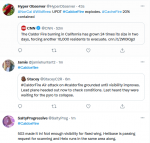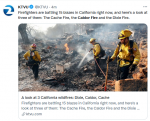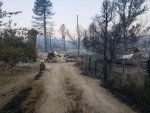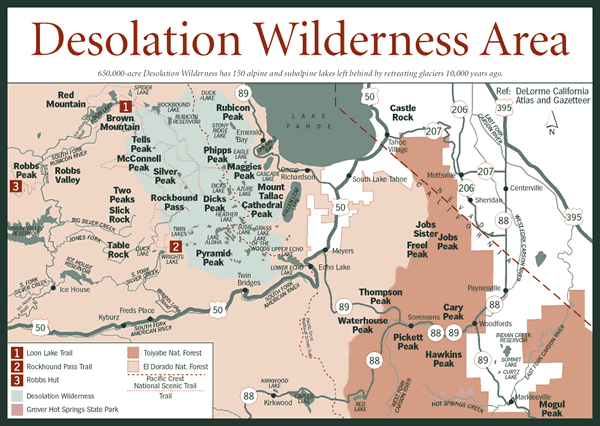I've been studying paleoclimatology to one degree or another since graduate school, it isn't my main focus but it is an interest.
If you look at the tree ring data, during solar minimum periods and often when there was a lot of "climate chaos" (the real kind) in other parts of the world (14th century, 6th century, 1177 Bronze Age/End of the Old Kingdom) there were extreme droughts in the entire Western area of what is now the United States and in some cases going way down into Central America.
During one such period, the Anasazi are believed to have left their cliff dwellings to become the Hopi (based on tree rings preserved in the Hogans), it may have contributed to the severe decline of the Mayan Urban civilization (they returned to being small farmers before the Europeans came) and there is some evidence of huge natural fires and a severe lack of water (up to a couple of hundred years) during these periods.
At almost the same time periods, the civilizations of the Bronze Ages collapsed (almost overnight) and the Famine Stella was erected in Egypt.
During the Migration Age, parts of Northern Europe became extremely wet and cold with entire land areas washing away (sea levels on the other hand rose, go figure, I can't). Major volcanic eruptions seem to have made that episode worse, the results were the "fall" of the Western Roman Empire and what non-historians call The Dark Ages in Europe (historians call it the migration age because so many people were displaced).
There was also a round of the Black Death (Plague of Justinian) that killed 1/3 of Europe.
There was a near repeat of all this both in Northern Europe and in the Americas around the 14th century - with weather so bad by the early 1320s that The Great Famine in Europe caused people to wonder if God had left the Earth and turned it over to satan. This was 20 years before the Black Death once again took away a third of Europe in just a few years.
We don't know what the Maya thought as they fled their cities around this time, as the Europeans burned most of their books - their elders say they "got tired of living so close together and decided to become simple farmers again."
Nightwolf says: "that sounds like a great excuse to tell the grandkids," he may or may not be correct - the point is, it happened.
So we can't just go by "since the 19th century" when it comes to climate in California or the Western United States.
One observation I made back in the 1970s studying anthropology was that the Native Americans in this area (West Coast) never engaged in agriculture or if they did it was on such a small scale there is no record of it. My educated guess is that any group that tried it, was forced to go back to hunting and gathering when the droughts and fires came back (or severe floods).
The same thing happened to the farmers in Northern Ireland during the 6th century solar minimum/volcanic/crazy weather period. They could no longer farm and would have starved to death if they hadn't returned to hunting and fishing for at least a few decades.
The Native Americans of California traded and probably traveled to places occasionally where people had agriculture, they probably knew what it was, they just also knew it wasn't sustainable where they lived over the generations.
Further up the coast, there was enough game, natural resources, and fishing to allow people to live in villages without actually planting crops, but that's a totally different story. They could also be mobile and probably just picked up and moved during the extreme droughts or fires.
But I totally agree with you that the fires are likely to just keep burning until there is little left to burn and the area could become mostly empty of people unless the rains come back and this drought period is a shorter one (and it could be).
The lack of sunspots though concerns me.

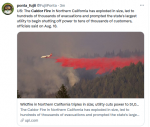




 I try not to get bent out of shape...and I have been saying crap and other choice words a lot lately.
I try not to get bent out of shape...and I have been saying crap and other choice words a lot lately.
